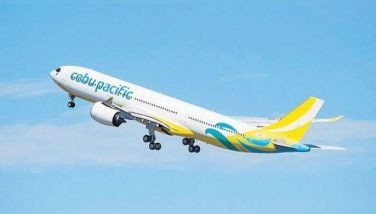Asia-America submarine cable network operational by August
MANILA, Philippines – The multi-country Asia America Gateway (AAG) submarine cable network has been scheduled to start operations in August this year, consortium member Philippine Long Distance Telephone Co. (PLDT) said.
Despite challenges such as bad weather, PLDT said the consortium has ensured that the quality of engineering and installation work is not compromised.
A member of the AAG consortium formed in April 2007 to build this 20,000-kilometer long high-bandwidth fiber optic submarine cable system, PLDT revealed that the construction of the Philippine Terminal Station, as well as the other terminal stations comprising the AAG cable project, has been completed. The other terminal stations are located in Malaysia, Singapore, Thailand, Brunei, Vietnam, Hong Kong, Guam, Hawaii and the US mainland.
All land cable installation works have been installed and majority of the submarine cable portion have been laid, PLDT added. The remaining submarine cable installation work is expected to be completed this month. Network testing is expected to begin immediately after the completion of the remaining submarine installation works.
The AAG consortium is composed of PLDT, AT&T Corp. (USA), Bayan Telecommunications Inc. (Philippines), Bharti AirTel (India), Government of Brunei Darussalam (Brunei), British Telecom Global Network Services (UK), CAT Telecom (Thailand), Eastern Telecommunications Philippines Inc. (Philippines), FPT Telecom (Vietnam), PT Indosat (Indonesia), PT Telkom (Indonesia), Saigon Postel Corp. (Vietnam), StarHub (Singapore), Telekom Malaysia (Malaysia), Telcotech Ltd. (Cambodia), Telstra (Australia), Telecom New Zealand International (New Zealand), Viettel (Vietnam), and Vietnam Post & Telecommunications Group of Vietnam (Vietnam).
PLDT is also part of the group that plans to build an international undersea cable system within the Asia Pacific region.
These carriers, all with a growing and ready customer base in their respective domestic markets, include Chunghwa Telecom (Taiwan), China Telecom (Mainland China), China Unicom (Mainland China), KT Corp. (Korea ), NTT Communications (Japan), Telekom Malaysia (Malaysia) and VNPT (Vietnam).
The proposed undersea cable system will be called the Asia — Pacific Gateway (APG) and is planned to connect Malaysia, Singapore, Thailand, Vietnam, Hong Kong, the Philippines, Taiwan, Mainland China, Japan and Korea.
PLDT said the proposed Asia Pacific Gateway will provide additional capacity for growing demand and an alternative, diverse routing within the region such that it will avoid some of the areas most prone to seismic activity, conditions which are hazardous to undersea cables.
The cable system will span about 8,000 km and will use the latest Dense Wavelength Division Multiplexing (DWDM) technologies with a minimum design capacity of four terabit per second. It is planned to be ready for service in 2011.
“The planning and eventual implementation of the new Asia Pacific Gateway project is timely due to the growing bandwidth demand of PLDT and the other proponents. It is also intended to meet the requirements for cable route diversity, protection, and to provide capacity to replace the retiring cables in the region,” according to Alejandro Caeg, PLDT first vice president, international and carrier business group.
He said the proposed cable system has the potential to provide an alternative route and/or restoration paths to existing cable systems in the region as it is designed to provide a high degree of inter-connectivity with existing and planned high bandwidth systems.
- Latest
- Trending






























